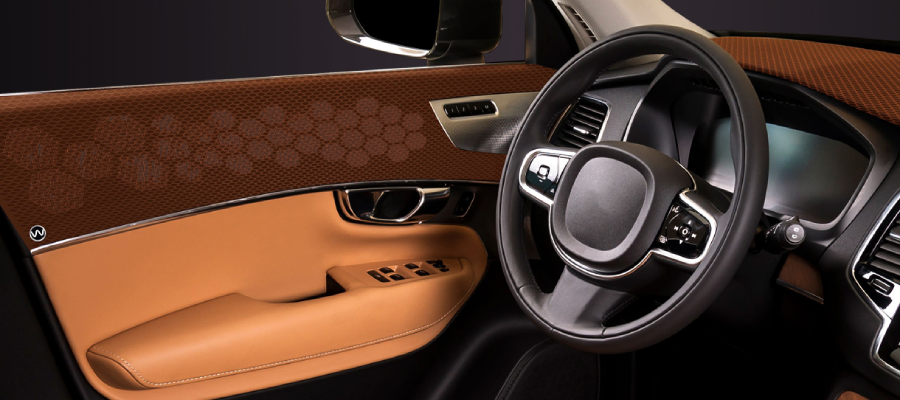
The vehicle cabin is set to undergo a transformation over the next 10 years, this has been led by the transition to EVs but will change dramatically as automation takes hold. Many technologies are being developed for future automotive interiors – smart surfaces, haptics, etc. and at the same time there is a drive towards weight reduction to improve vehicle efficiency.
In terms of audio, the vehicle components have changed little for many years with varying numbers of traditional electromagnetic speakers being used to provide audio output. We’ve talked about some innovations such as Sennheiser Ambeo mobility system, which is now marketed as Continental’s Ac2ated Sound System. This is described as a “speaker-less sound system” which uses actuators to vibrate existing surfaces and “requires 95% less volume” than traditional speaker systems. Continental states “conventional high-end audio systems in vehicles often require 10, 20 or even more speakers. These systems usually weigh up to 40 kilograms and have a total installation volume of 10 to 30 liters.”. Therefore, reducing the weight of the speakers could lead to a significant effect on efficiency.
Warwick acoustic’s approach is different in that it uses ultrathin electrostatic transducers for audio output. As described by the company “our Electrostatic Transducer module vibrates air using a thin (15μm), conductive multi-layer membrane centred between two thin, electrically conductive stators. The membrane is kept at a high DC potential relative to the stators and the audio signal is applied across the stators. This results in the membrane moving in response to the audio signal thus generating acoustic output.”.
It\’s an interesting technology that could be a key product for the car interiors of the future. There are several issues that may need to be overcome though before it would be adopted, some include:
- Price – paramount in a very cost sensitive automotive market
- Longevity – will need to be proven to last 10s years
- Power – higher voltages are usually required for electrostatic components
It will be interesting to see if the ElectroAcoustic Panels go into mass production, in June 2023 Warwick Acoustics’ announced it had “secured its first production contract with a leading global luxury vehicle manufacturer.”


